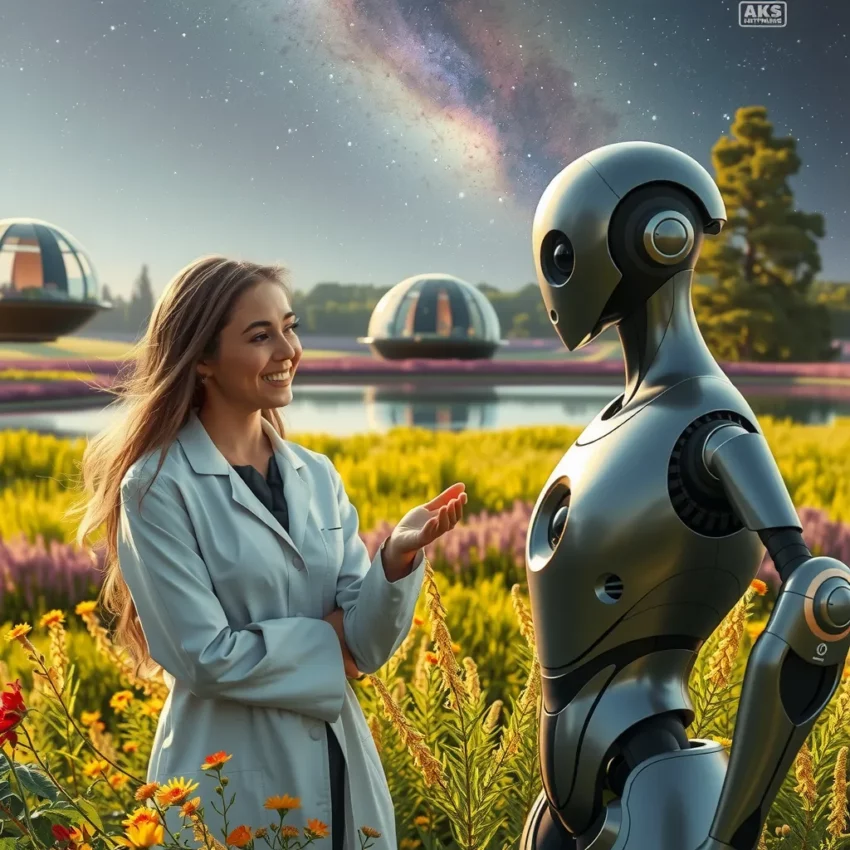Anthropic Releases New Tutorial for Building AI Apps with Claude
Anthropic has published a comprehensive tutorial titled How to Build an AI App in Claude, which highlights a streamlined approach for developing AI applications. They emphasize starting with a simple definition of the app’s purpose and key features. Using Claude’s built-in templates such as PRDs and the 5 Whys method allows for rapid scaffolding. A notable feature is the ability to iterate interactively by chatting with Claude to tweak features, fix the user interface, or adjust workflows. Debugging can be conducted in plain English using the “Fix with Claude” function, making troubleshooting much more accessible. Finally, the tutorial shows how to preview, test, and share the app all within a single seamless process. This tutorial illustrates how developers can move from concept to working prototype without relying on heavy tools or extra frameworks, making it a valuable resource for those experimenting with agentic applications.
Google Introduces Gemini Photo-to-Video Generation Powered by VEO 3 Model
Google has launched a new feature within its Gemini AI framework that enables photo-to-video generation, powered by the advanced VEO 3 model. Users can upload a still photo, describe the scene and accompanying sounds, and Gemini will create an 8-second video featuring AI-generated motion, ambient noise, and speech. This tool is currently available to Google AI Ultra and Pro subscribers in select regions. The new capability unlocks creative opportunities such as animating sketches or nature scenes and adding storytelling elements and sound design to static images. Each generated video includes a visible watermark and SynthID to clearly mark the content as AI-generated. This advancement transforms traditional photographs from passive memories into dynamic stories, significantly enhancing visual creativity.
Big Tech’s Intense Competition Over AI Talent
The intense competition among major technology companies for AI talent is shaping up as a decisive battleground in the race for AI dominance. Meta recently made a headline-grabbing move by hiring Ruoming Pang, a key AI figure at Apple, with a massive multi-year compensation package reportedly exceeding that of Apple CEO Tim Cook. Meta also attracted multiple researchers from OpenAI to its newly formed “Superintelligence Lab,” with offers reportedly reaching $300 million over several years. This aggressive hiring reflects the scarcity and importance of top-tier AI researchers; estimates suggest fewer than 10,000 professionals worldwide have the expertise to lead frontier AI development.
While financial incentives are substantial, companies like OpenAI stress that winning the talent war also depends on culture, employee well-being, and creating purposeful work environments. The broader implication is that the AI race is not only about technological supremacy but also about establishing the ideal conditions for innovation to thrive. This situation raises fundamental questions about how organizations can build workplaces where leading AI researchers want to stay long-term.
Wimbledon Conducts Fully AI-Powered Line Judging for the First Time
In a historic first for any Grand Slam tournament, Wimbledon has completely eliminated human line judges from its matches. Instead, 450 AI-powered cameras track every shot to ensure flawless line calls without human error or disputes. This bold move marks a significant innovation in sports technology by relying entirely on AI for line adjudication, guaranteeing no missed calls or second-guessing. The deployment of AI monitoring at scale could set a precedent for how officiating is conducted in professional sports moving forward.
AI Chip Industry Faces Growing Geopolitical and Technological Challenges
The competition in the AI chip market is intensifying, described by some as an “AI chip cold war.” Key dynamics include Nvidia implementing export controls to limit access to its chips, China accelerating its domestic chip manufacturing efforts, and emerging quantum computing chip technologies that may disrupt current paradigms. Nvidia CEO Jensen Huang’s strategic positioning has been compared metaphorically to a powerful figure wielding ultimate control over AI hardware development, raising questions about who will ultimately dominate the language of AI computing.
Another forward-looking concern is whether Artificial General Intelligence (AGI) could one day design its own hardware, potentially transforming the chip industry and the future of AI deployment.
—
These recent developments collectively illustrate the rapid evolution and high stakes within AI technology—from software innovation and creative AI applications to talent acquisition battles, pioneering use of AI in sports, and geopolitical tensions within AI hardware production.
